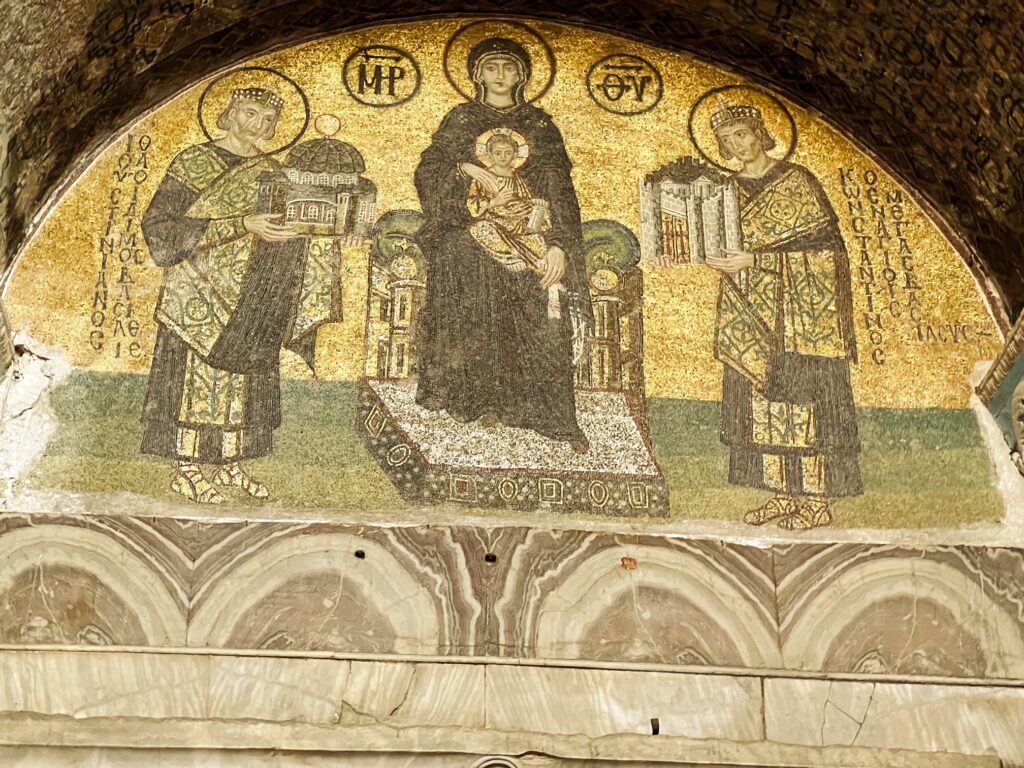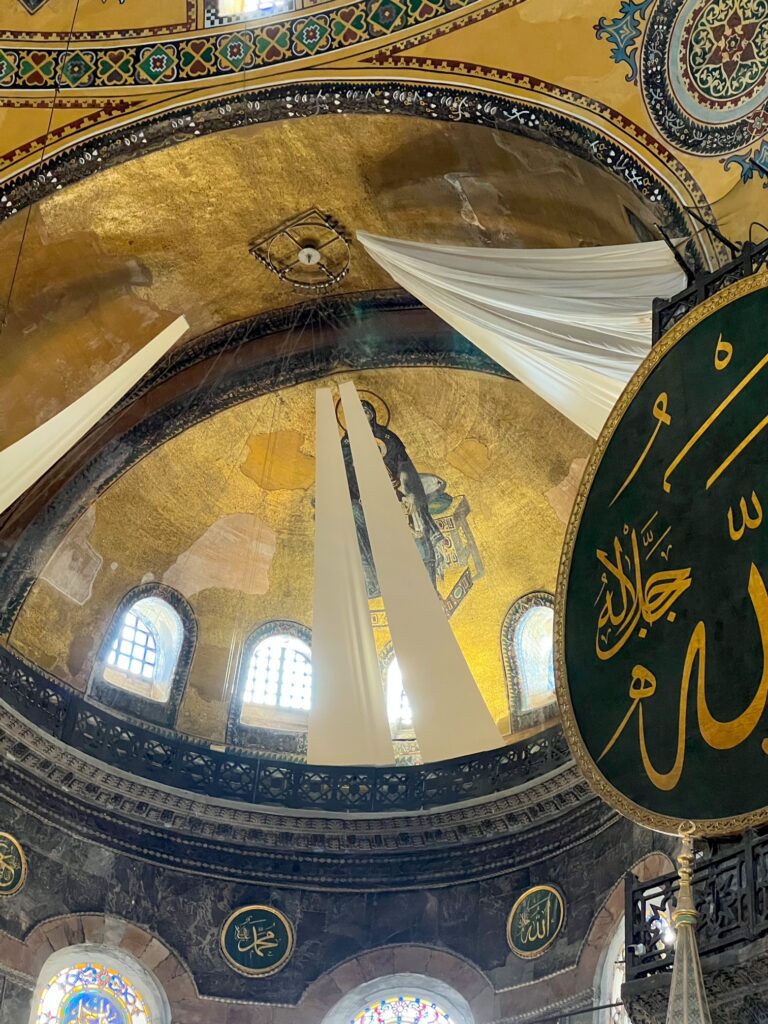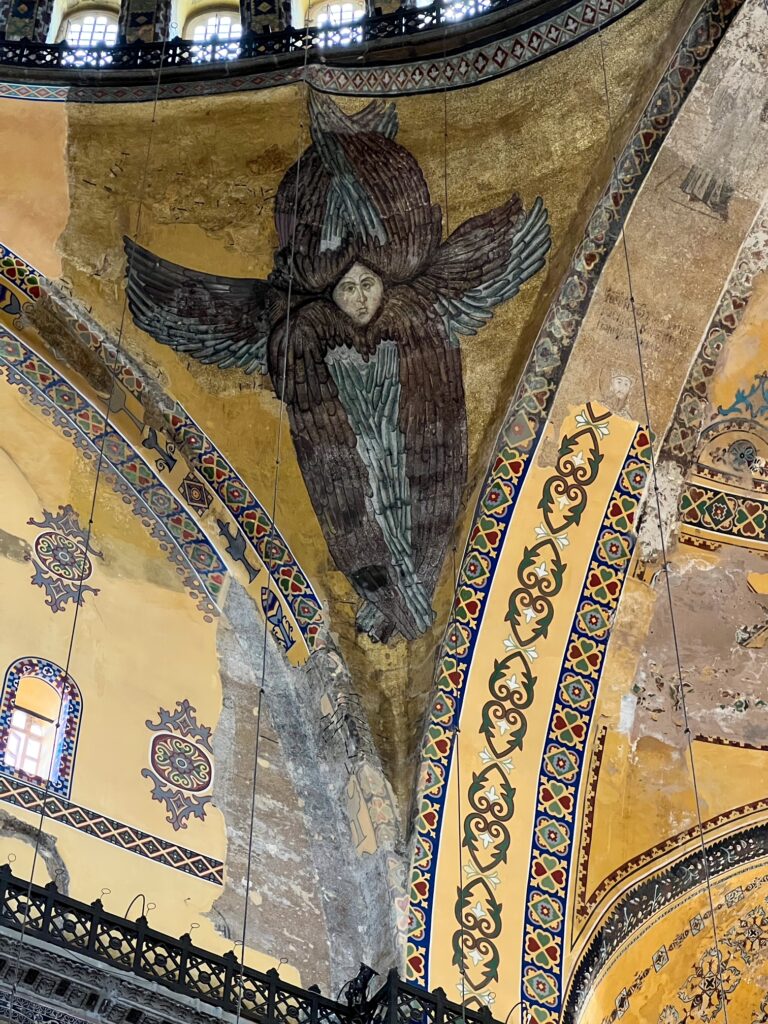Sabbatical Notes from Pastor Stephen: Istanbul #2
October 5, 2022



One of the places I really wanted to visit while In Istanbul was the Hagia Sophia and it didn’t dissapoint. Hagia Sophia was the tallest human made structure in the world for a thousand years and was completed in less than six years, which blows my mind when you consider how long some of the European cathedrals like Saint Peter’s took.
As I mentioned yesterday, Istanbul has often been a city of peace and tolerance through its promotion of diversity. The city blends together cultures and religions from around the world that live in harmony. A perfect symbol of this mixture is Hagia Sophia. Originally, it served as the largest cathedral in the world for nearly a thousand years. The current one (there were two previous Hagia Sophia’s in the same spot built of wood that didn’t survive) was built by the eastern Roman emperor Justinian I as the Christian cathedral of Constantinople for the state church of the Roman Empire between 532 and 537. Designed by the Greek geometers Isidore of Miletus and Anthemius of Tralles, it was formally called the Church of the Holy Wisdom and was then the world’s largest interior space and among the first to employ a fully pendentive dome. It is considered the epitome of Byzantine architecture and is said to have “changed the history of architecture.”
Hagia Sophia was embellished with mosaics of Christian symbols such as angels, the Virgin Mary, and Jesus. When the Ottoman Empire took over, it was converted into a mosque, adorned with minarets and Arabic writings in the 15th and 16th centuries, acting as a template for other Ottoman mosques. In 1934 it was turned into a museum, welcoming visitors from all around the world, representing the integration of Islam and Christianity in Istanbul. On July 10, 2020, the Council of State (Danıştay), the highest administrative court in Turkey, revoked the 1934 Cabinet decree that had turned Hagia Sophia into a museum. The Court’s decision was followed by a decree signed by Turkish President Recep Tayyip Erdoğan to reopen the monumental building as a mosque after a hiatus of 86 years. The Christian mosaics remain but those in the main area are covered with sheets because of Islam’s rules about images. You can just make out Mary on one of the upper walls behind a sheet.
What I find interesting is that for 1500 years different emperors and empires and crusaders and sultans and armies have preserved and protected this church-turned-mosque-turned-museum-turned-mosque. All these different leaders and religions and governments have been aware of its outstanding cultural, historical and spiritual value in all senses and have, for centuries, protected, renovated, and fortified this holy site accordingly.
Historical records show that when İstanbul was conquered by Ottoman Sultan Mehmet II, ‘the Conqueror’ (Fatih) in 1453, he headed directly to Hagia Sophia where the local residents had taken refuge, to let them know that their lives and properties would be safe and untouched. Unlike the 13th century when there was looting and pillaging — or the poor, dilapidated state of the building before the time of the Ottoman conquest — Ottoman Sultans did their utmost to repair and maintain the edifice where they performed their Friday prayers. The Turkish government continues to preserve and protect the UNESCO World Heritage site today.
Even though the building is now a functional mosque once again, it continues to welcome all visitors, regardless of religious background to visit and experience the site, and its rich history continues to be preserved.
One of the things I’ve learned is that religious practices in this city are far different from those in the United States; Muslims freely pray in churches and Christians freely pray in mosques. This is experienced when entering Hagia Sophia, where both Islamic and Christian symbols are observed and respected. It’s also interesting that there are many Greek and Roman mythological symbols too for Poseidon, Aphrodite, Zeus,etc. I felt the presence of God there and offered my own prayers in this sacred space that has had millions of prayers offered to God/Allah over the course of the centuries. It felt holy and right to pray in a place that is seen as valuable and sacred to so many who also disagree on so much. It felt like a place of peace and reconciliation for those reasons, so it was the perfect place to pray.
Sent from my iPhone